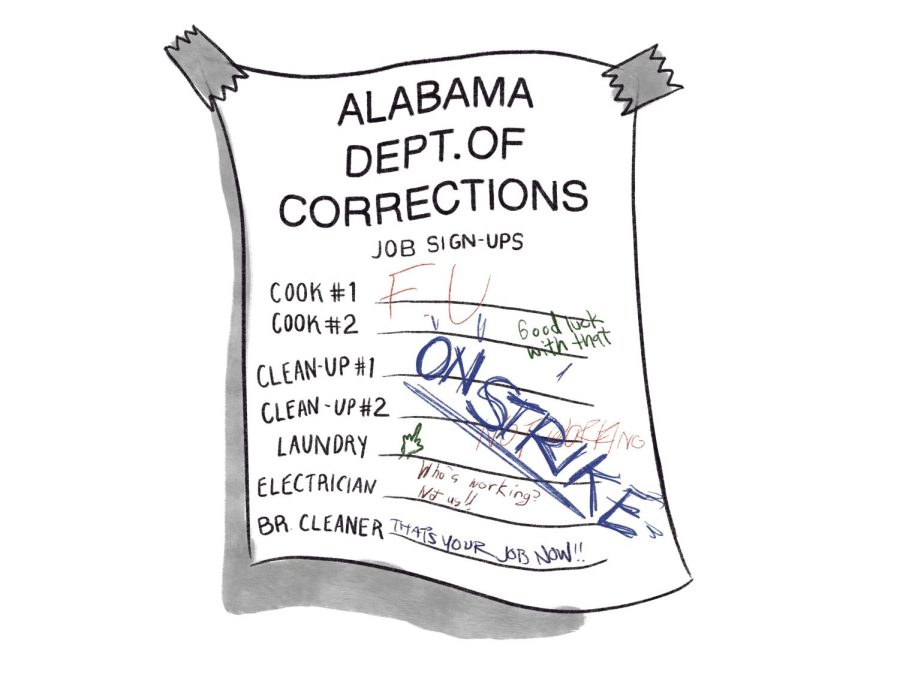Alabama Prisons: Should We Build More or Reform?
November 8, 2022
20,000 Alabama inmate workers—a whopping 80% of the state’s prison population—began a labor strike on September 26th to protest inhumane living conditions. Alabama’s prisons have been described as filthy and overcrowded, with many at up to 182% of capacity. The question remains: is building more prisons the right solution, or is criminal justice reform the way to go?
This past June, as prisoners became increasingly frustrated about the Alabama Department of Corrections’ (DOC’s) multiple shortcomings, remote organizing of the strike took off via Zoom. Prison advocacy groups scheduled Zoom calls with influential inmates, encouraging them to spread the word about the anti-DOC protest within their respective prisons. The DOC’s serious inadequacies include allowing for filthy living facilities, permitting immense overcrowding, and creating an environment where murder and rape—both violations of constitutional protection from cruel and unusual punishment—are notably prominent. The purpose of the strike is to get the DOC to implement much-needed criminal justice reforms.
The participants in the strike are ready to risk it all. They are abandoning their usual jobs of cooking and cleaning within the prisons for pennies an hour, deservedly forcing officials to take on this work. In retaliation to the strike, inmates have been receiving two bagged meals a day rather than three. Creating malnourishment is not a new technique of shady Alabamian guards—photos of the skeletal Kastellio Vaughan went viral in late September for the indisputable mistreatment inflicted upon him.
Alabamian inmates have requests that they demand officials meet in exchange for the strike to end. These terms include improving living conditions, creating a more transparent parole process, and forming a review board to oversee the Alabama Bureau of Pardons and Paroles.
In response to the hundreds of Alabamians who protested outside the DOC’s headquarters on behalf of the inmates, Republican governor Kay Ivey reminded the public that she and other lawmakers approved a plan last year of creating two new prisons to prevent overcrowding. However, activist groups have asserted that building new prisons is not the solution. What Alabama prisons really need, they correctly claim, is criminal justice reform.
These activists are right. Building more prisons is a quick-fix solution to just one of the many problems that Alabamian prisoners experience. The bigger issues include the criminal justice system’s mass incarceration of inmates, aggressive drug sentencing, reincarceration of juvenile offenders, and promotion of racism. According to The Sentencing Project, the nationwide ratio of incarceration of African Americans to white people is about 5:1, and Latinos are imprisoned 1.4 times more than whites.
The problem with Alabama’s prisons lies with systemic racism and prejudiced systems, rather than with specific prison conditions. Many Alabamian inmates contributing to overcrowding should not have been forced into the carceral state in the first place, as countless prisoners are locked up for minor possession charges due to the war on drugs. In short, adding more prisons only perpetuates a system of mass incarceration and all the harm that follows suit. Alabama’s prisons must be reformed.
This piece also appears in our October 2022 print edition.









